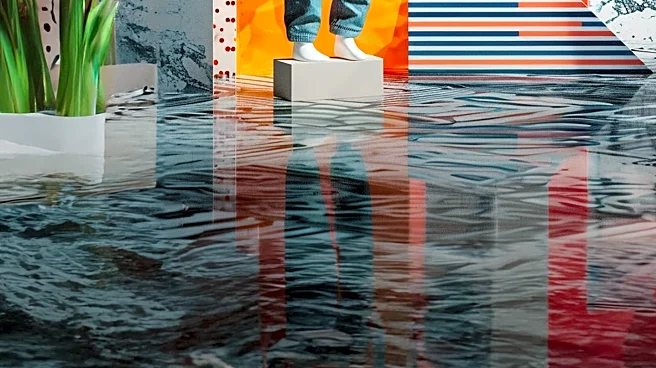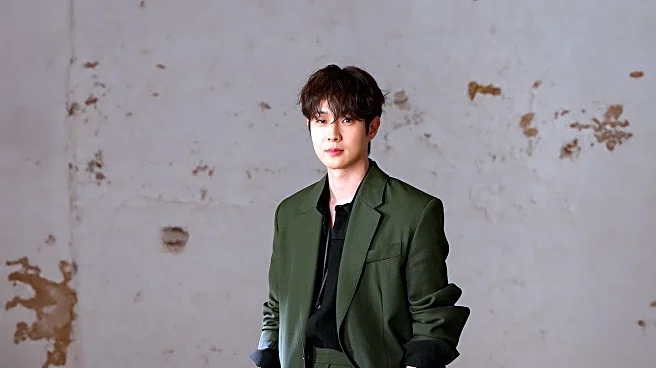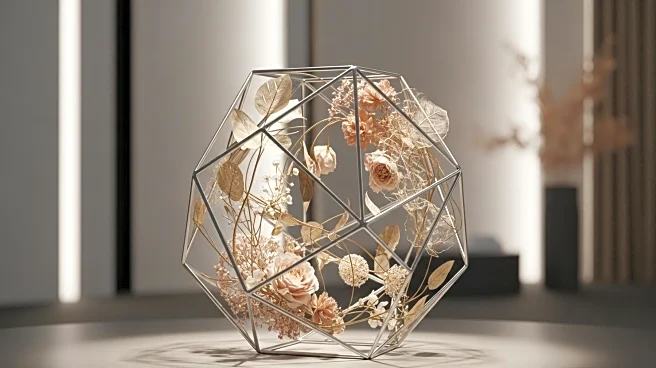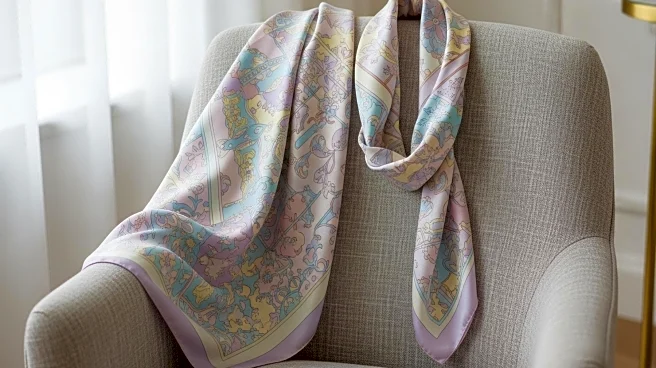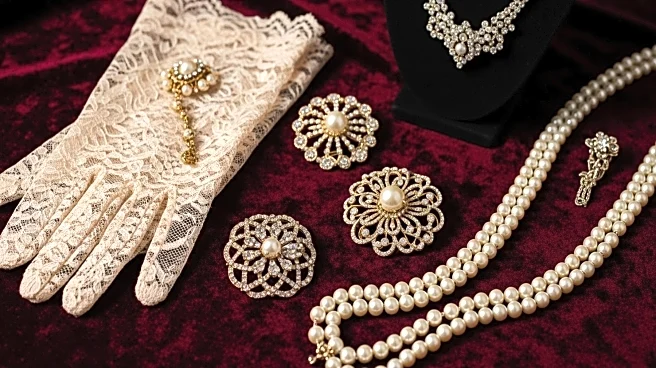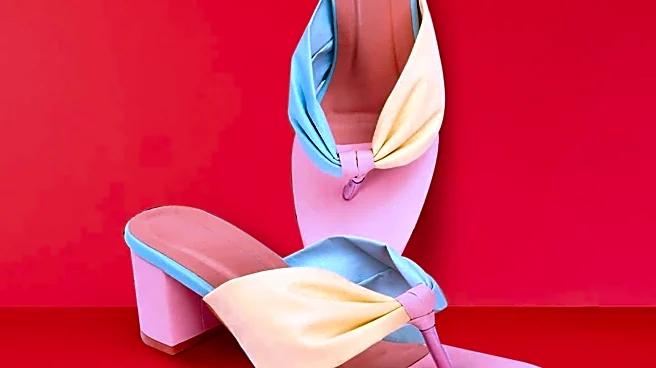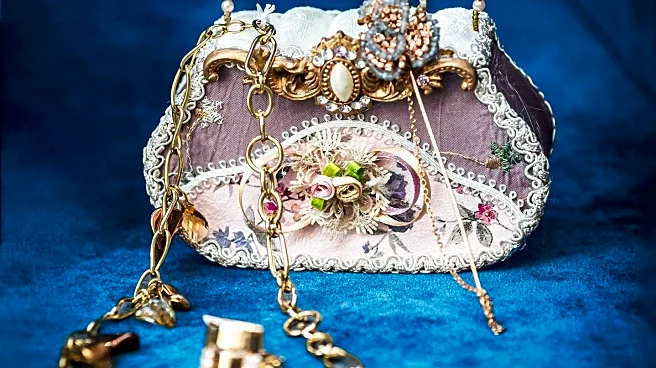What's Happening?
Zomer has introduced its Spring 2026 Ready-to-Wear collection, drawing inspiration from the Jazz Age and the Art Deco movement. The collection, designed by Danial Aitouganov and Imruh Asha, features a mix of playful and wearable pieces. Highlights include a cocktail dress adorned with camouflage-printed sequins and black velvet shoulder straps, reflecting the 100th anniversary of the Art Deco movement. The collection also includes breezy dresses inspired by collapsed umbrellas, sharply tailored trousers, and colorful belts in outsized proportions. Zomer's collaboration with Make Up Forever added a unique element to the runway, transforming it into a canvas with models stepping on squares of liquid color.
Why It's Important?
Zomer's latest collection showcases the brand's ability to blend historical influences with modern fashion trends, appealing to a diverse audience. The collection's focus on wearability and artistic expression highlights the brand's growth and innovation in the fashion industry. By incorporating elements of performance art and collaboration with other brands, Zomer is setting a precedent for creative runway presentations. This approach not only enhances the brand's reputation but also influences future fashion trends, encouraging other designers to explore similar artistic collaborations.
What's Next?
As Zomer continues to gain recognition, the brand is likely to attract more attention from fashion enthusiasts and industry professionals. The collection's success may lead to further collaborations and opportunities for the designers. Additionally, the celebration of the Art Deco movement's anniversary could inspire other fashion houses to incorporate similar themes in their upcoming collections, potentially leading to a broader trend in the fashion industry.
Beyond the Headlines
The integration of historical themes with contemporary fashion in Zomer's collection highlights the cultural significance of the Art Deco movement. This approach not only pays homage to a pivotal era in design history but also encourages a deeper appreciation for the artistic and cultural influences that shape modern fashion. By revisiting and reinterpreting past styles, designers can create a dialogue between different eras, enriching the fashion landscape with diverse perspectives.


